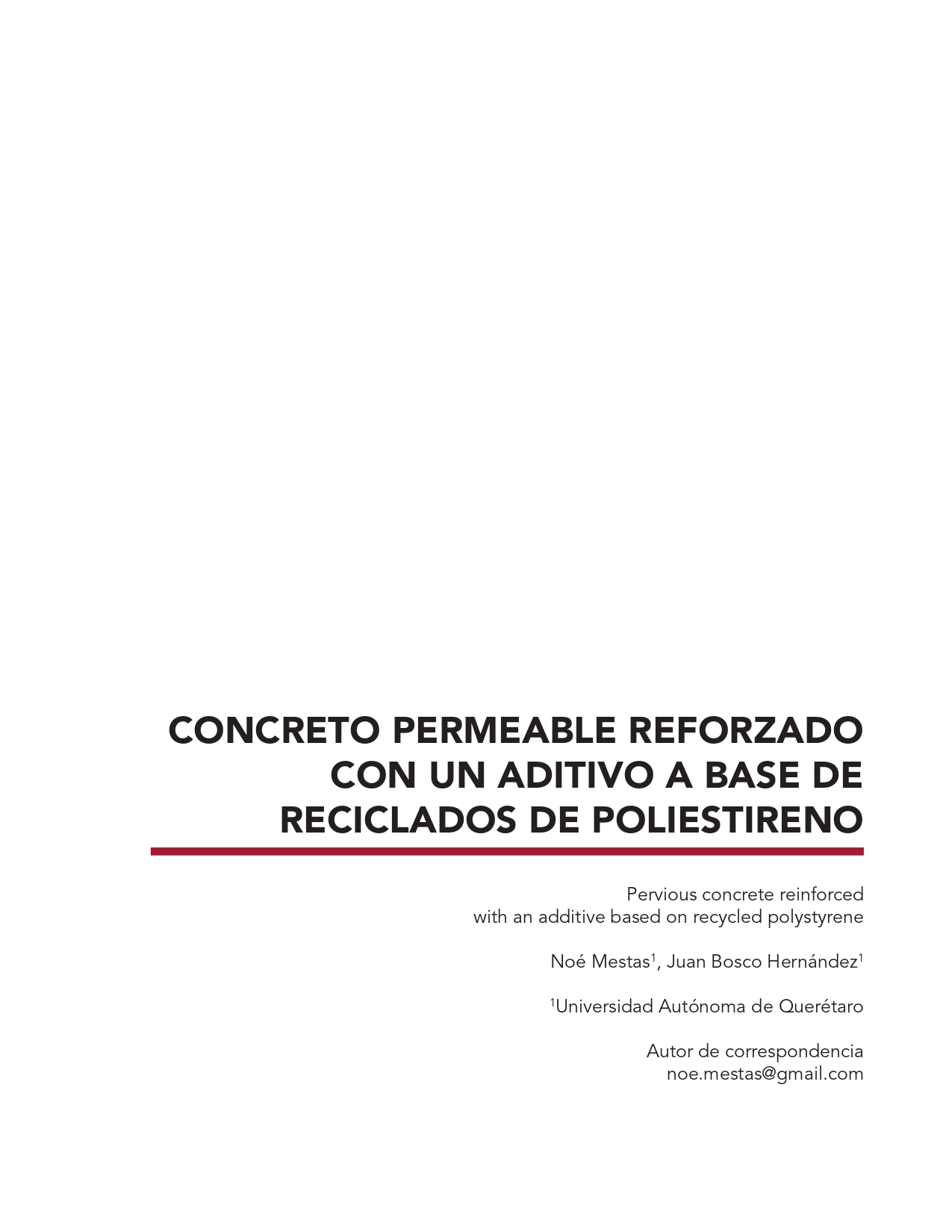Abstract
One of the main problems in terrestrial routes is the infiltration of water into the lower layers of pavement, which is a serious conflict, from the geotechnical point of view, that causes differential settlements and thus, permanent deformations. The main objective of this research is to present an alternative solution for the use of polymers and in this way help the environment by reducing greenhouse gases. The use of recycled polystyrene incorporated in concrete mixtures is one of the alternatives which benefits both the environment and society because pervious concrete allows the infiltration of water to the subsoil or to the lower layers of pavement without this suffering any damage. For this research there were made pervious concrete specimens at different ages of curing, which helps to monitor its behavior over time by measuring its compressive strength and coefficient of permeability. An average compressive strength of 89.07 kg/cm2 at 28 days of curing with the use of polymeric additive was obtained and it was determined that the permeability coefficient is affected by the use of the polymeric additive based on the measurements taken in the laboratory, a correlation coefficient of 95.28% was obtained.

This work is licensed under a Creative Commons Attribution-NonCommercial 4.0 International License.

